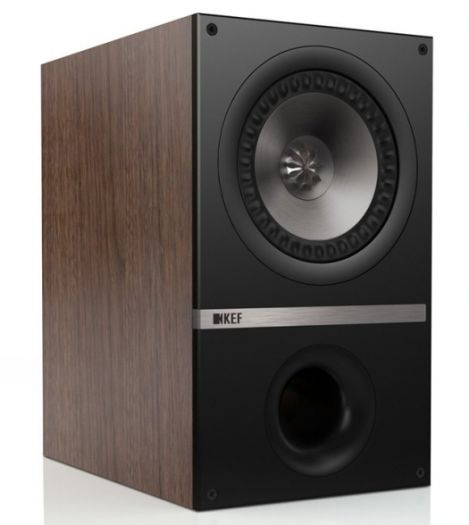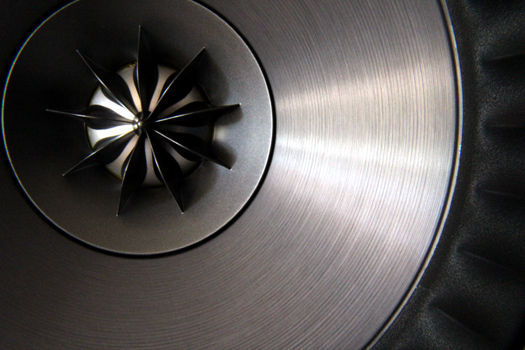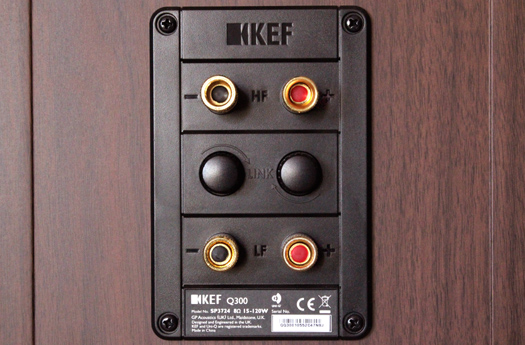British speaker company KEF has become a storied name in the audio world by crafting quality, if a little oddball, speakers. Their Blade and Muon speakers feature swoopy, curvy designs that would look more at home in MoMA than perhaps in some living rooms.
At first glance, the boxy Q300s almost seem like they're from a different company, or perhaps a different era. The 90-degree angles evoke thoughts of speakers of yore (i.e., the 1970s) and the dark finishes - Black Oak, English Cherry, and European Walnut - do little to dissuade this.
Removing the simple black grill reveals the Q300s secret: they're covertly a little wacky. Instead of the traditional tweeter-over-woofer design found in most bookshelf speakers, the KEFs use a concentric design they call Uni-Q, where the tweeter sits in the center of the woofer.
There are many claimed advantages to this layout, the most notable being the drivers act as a single "point source" for sound. This gives the benefit of a more neutral sound off-axis, (so the folks in the cheap side-seats don't get short-changed on sound).
Now that's all well and good, but the proof is in the puddin'.

I decided to start off on the easy side, with Ola Podrida's self titled debut. Track 4, "Cindy" starts off with just an acoustic guitar, then fills out with the rest of the band. The soundstage through the Q300s was fantastic, wider and much larger than the speakers themselves. They had a big sound not usually found with small-ish bookshelves.
Changing styles slightly, I put in Daft Punk's brilliant score to the reasonably-ok-no-really-it's-not-that-bad Tron: Legacy. The criminally short "Derezzed" is a highly compressed but amazing track of pure energy. The KEFs had a tremendous punch, with great bass response. The mids had an almost growl to them that was quite welcome. The treble wasn't quite as smooth as I've heard on some other speakers, but it wasn't harsh.

Up next was Stevie Ray's Couldn't Stand the Weather, and the classic "Tin Pan Alley." The transients of the rim shots and explosive guitar popped, and though the atmosphere of this track was readily apparent, it wasn't quite as open as I've heard.
Sitting off to the side of my normal center listening position found little change in the sound, so chaulk one up for Uni-Q there.
Even though I knew they could rock, I couldn't resist playing a Brit on these Brits, especially after two Texans and a pair of Parisians. So in went the SACD of Ziggy Stardust and the Arthropods of the Red Planet. "Five Years" is one of my favorite tracks, given its slow build to epicness. At extremely high volumes, the Q300s compress a bit, falling apart slightly if pushed. My ears were giving up long before this was an issue.

Like any speaker, the Q300s like good amplification, sounding best on my reference Simaudio MOON 330A. That said, after listening to them on a variety of receivers, I found them to be far more tolerant than many speakers. They still exhibited their characteristic punchiness, solid bass response, and fantastic soundstage even with cheap receivers.
To me this makes them a fantastic value, knowing that even on fairly average gear they can still rock.
Where to Buy:
| Overall | |
|---|---|
| Value | |
| Performance | |
| Features/Ergonomics |